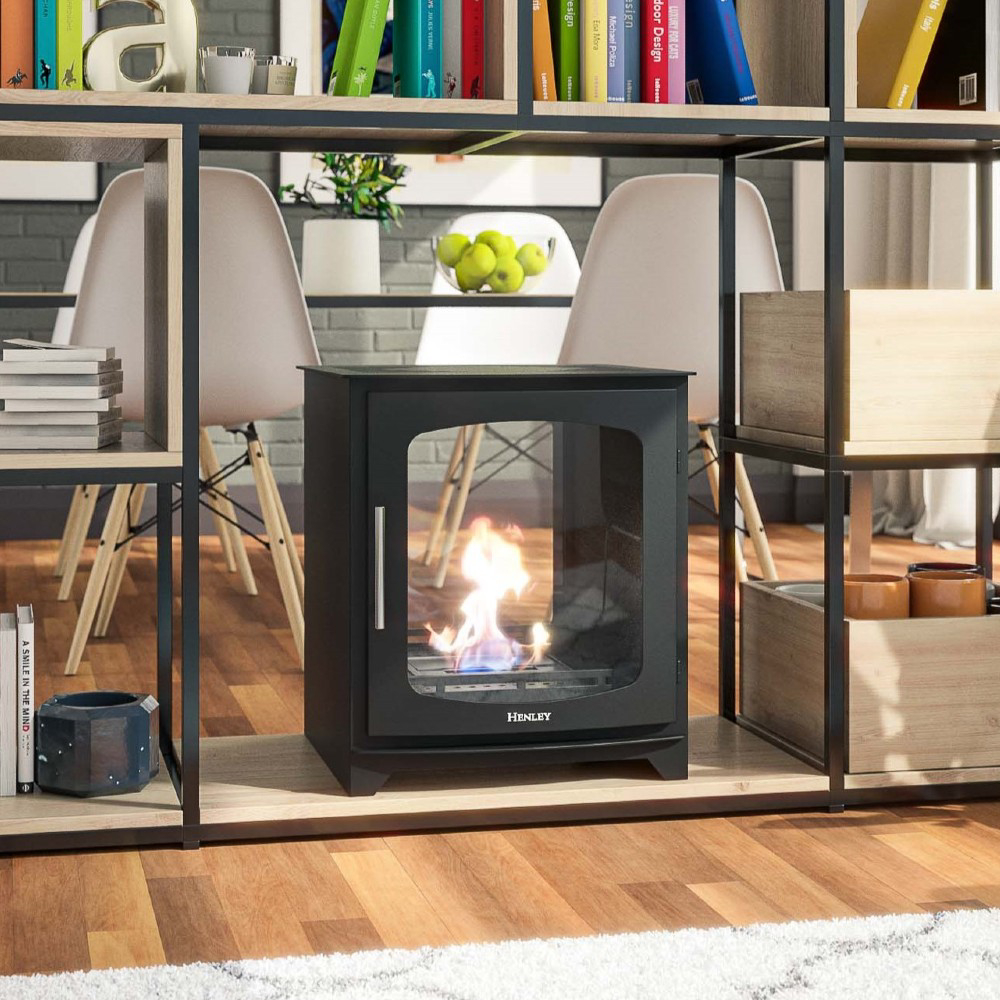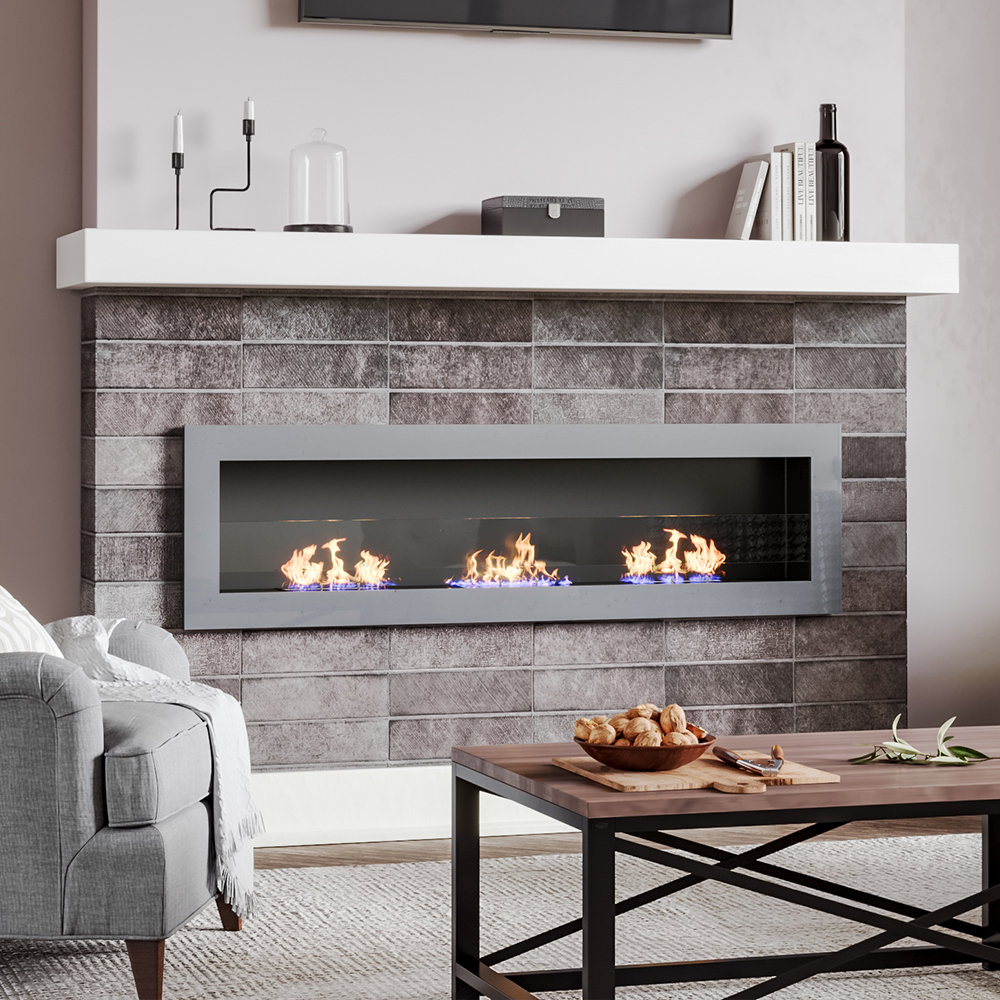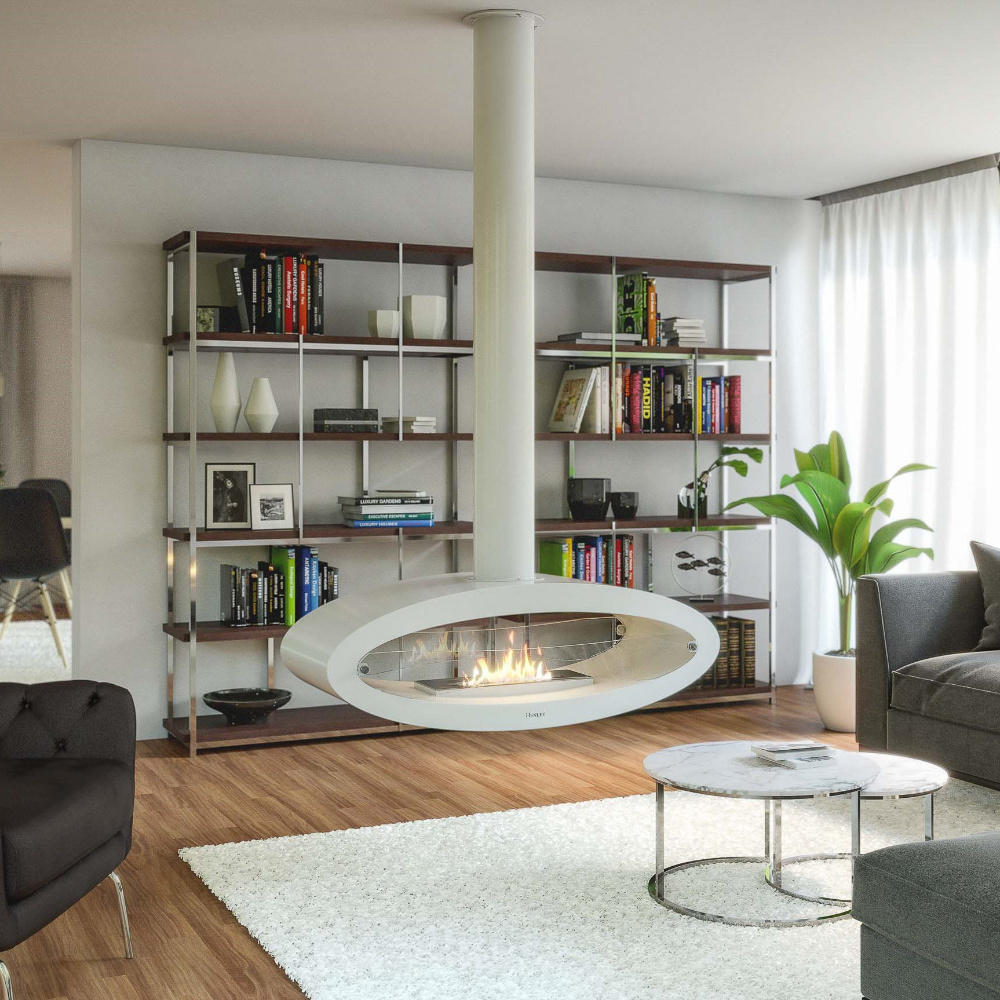Bioethanol fireplaces and stoves — how good is this renewable alternative to log burners?
A bioethanol fireplace or stove can add the look and feel of flames without the need for chimneys or flues. But can it provide enough heat? We take a look at this alternative heating choice
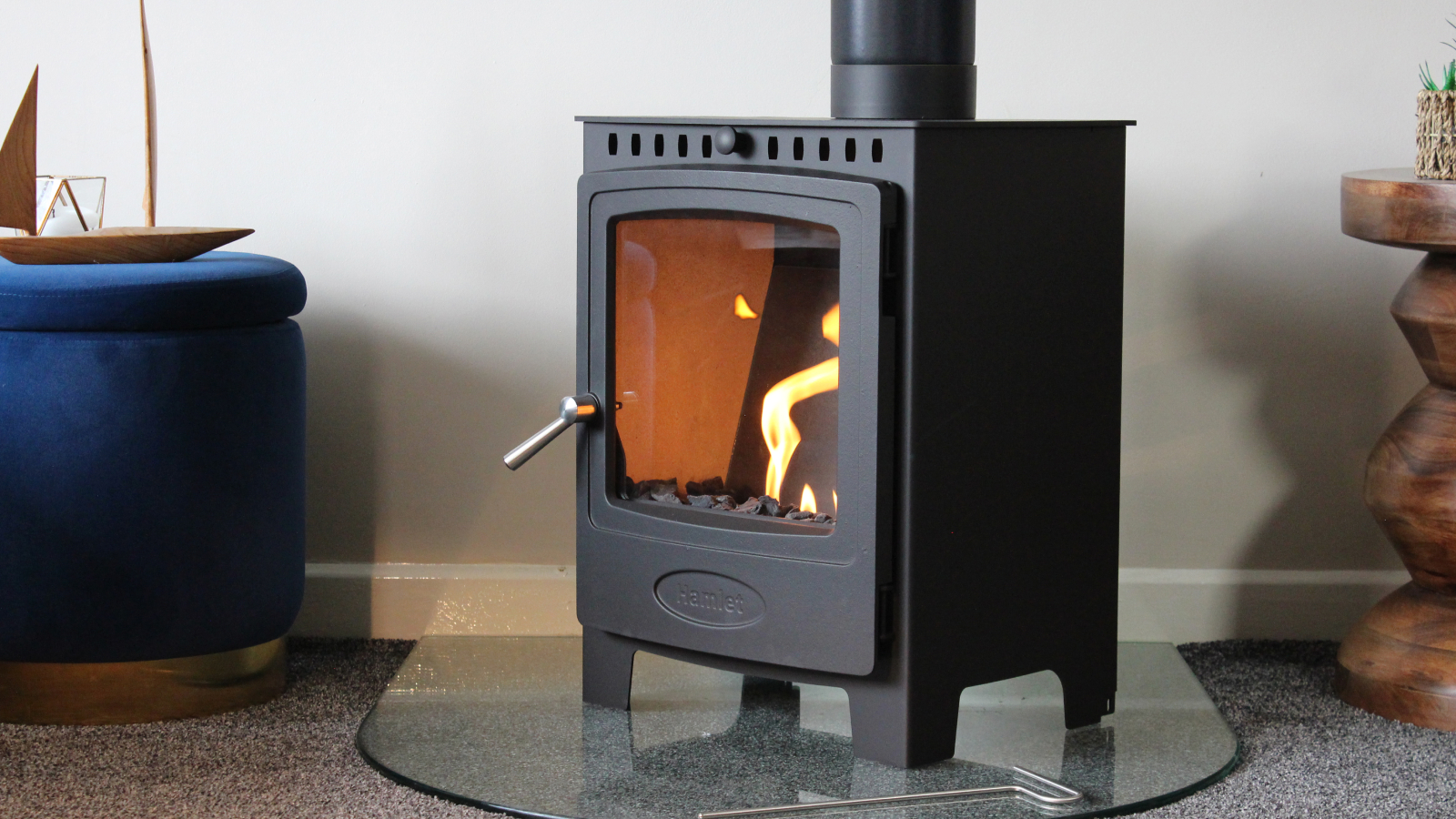
If you're searching for fireplace ideas that involve very little fuss, you could find yourself coming across bioethanol fireplaces. Low maintenance, suitable for installation in any type of home and available in a variety of different styles, on paper they could seem like the perfect solution.
But are they a really a suitable alternative to other types of fires or stoves or is their purpose more suited to design and decorative reasons than for warming your home?
We asked the experts to explain a little more about how they work, how much heat they provide and what you need to take into account when installing one to see if it is the right solution for your home.
Bioethanol fireplaces and bioethanol stoves: Is there a difference?
Bioethanol fireplaces and bioethanol stoves are simply different types of bioethanol fires which are designed to replicate other types of woodburning heating sources such as log burning stoves.
In both cases the device will contain a firebox (also called a combustion chamber) which contains the fuel, usually in a ceramic wool, that absorbs the fuel and allows it to burn in a safe and controlled way.
Manufactured to resemble traditional or modern fireplace ideas, bioethanol fireplaces are inset into a fireplace surround. Bioethanol stoves on the other hand look like log burners, and if homeowners are looking to imitate a real wood burner with a top flue, some models offer a flue collar that can be connected to the top of the stove and single wall flue pipe, in the same way as traditional log burner ideas.
Other styles such as freestanding, ceiling mounted and table top versions of bioethanol fires are also available.
Bring your dream home to life with expert advice, how to guides and design inspiration. Sign up for our newsletter and get two free tickets to a Homebuilding & Renovating Show near you.
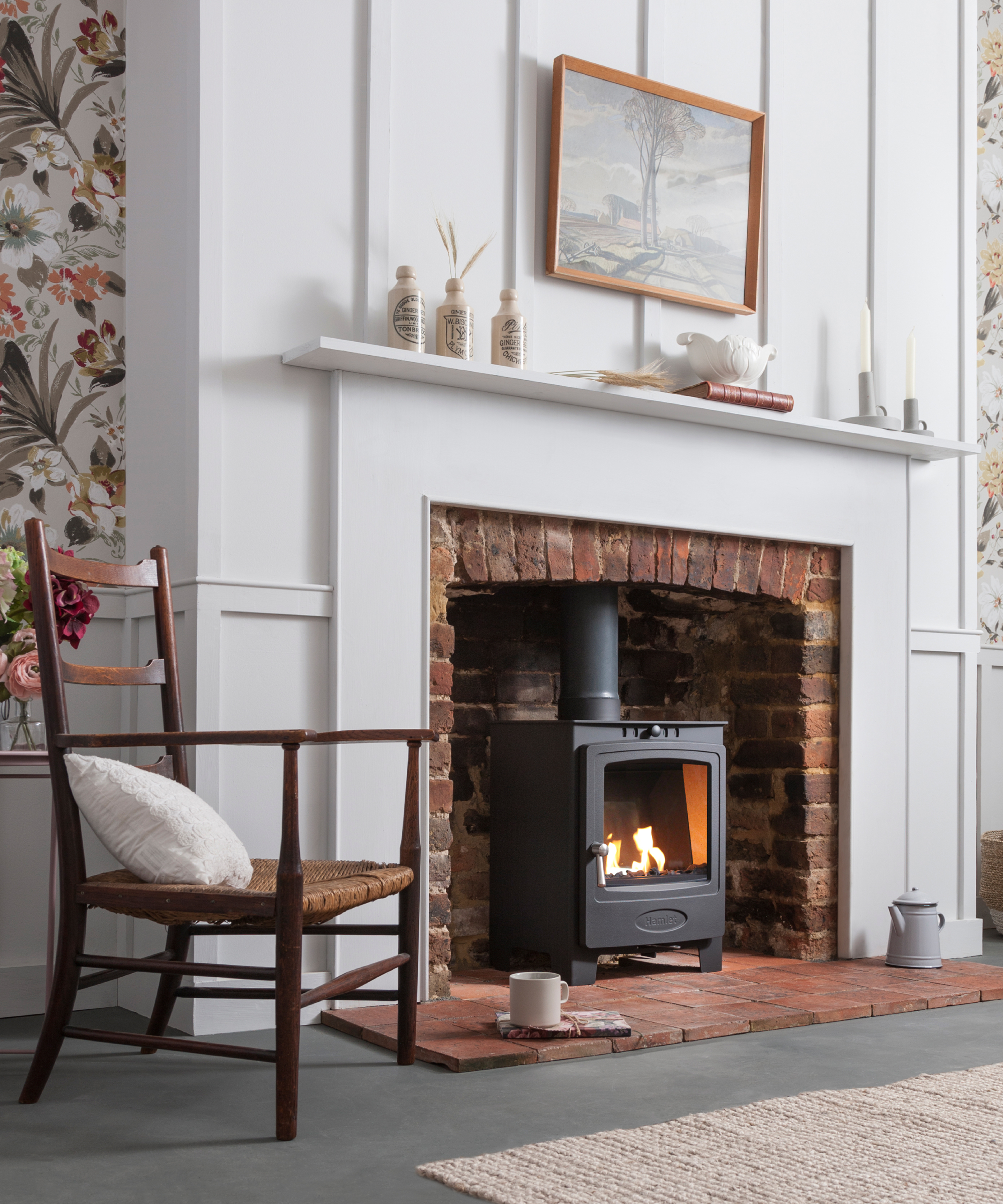
Shop these bioethanol fire ideas
What is bioethanol fuel?
"A bioethanol stove or fire utilises bioethanol fuel derived from renewable sources like plants," explains Joanna Humphreys, fire and stove specialist at Direct Stoves. "The primary advantage of these stoves is that they don't produce smoke or soot which means no chimney or flue is necessary.
"What's more," she adds, "bioethanol burns clearly, meaning it's a friendlier option for the environment compared to traditional wood or multi-fuel stoves. "
In general, the liquid fuel is manufactured by fermenting the sugar and starch elements of waste plant products such as sugar cane, straw and maize, amongst many others, and distilling the resulting liquid to purify it and enhance the alcohol content.
It was first developed on an industrial scale in Brazil as a road vehicle fuel when it was known as ethanol, the bio being added later, presumably to enhance its marketing potential. As such it qualifies as a renewable energy source.
When bioethanol is burnt in air the only emissions are water vapour and CO2. There is no smoke, no particulates and no carbon monoxide, meaning that it does less damage to air quality. The CO2 emitted is the same CO2 that was absorbed by the plants used to make the bioethanol, plants that took months to grow.

Joanna Humphreys is a fire and stove expert at Direct Stoves, an online stove retailer selling an array of wood burning, multi fuel, gas, and electric stoves.
Installing a bioethanol fire
"One of the most enticing features of a bioethanol stove is the ease with which it can be installed," says Joanna Humphreys. "Installing a log burner on the other hand can require complex planning, and installation may be disruptive.
"The straightforward nature of bioethanol stove installation reduces potential installation fees, and allows for quicker setup, letting you enjoy its benefits sooner.
In all cases there is no need for a flue or chimney or a specific air supply. The effect of this is that in a new build the cost of building a chimney is saved and in an existing house the stove or open fire can be sited in the existing fireplace (and the chimney blocked to improve thermal efficiency).
"Bioethanol stoves in particular are offer homeowners the freedom to place their stoves wherever they see fit," confirms Joanna Humphreys. "This is because no chimney is needed. This freedom grants an amazing opportunity to customise your living space, making them also suitable for bedroom ideas as well as living room ideas. Whether you're considering a minimalistic design or want to highlight the stove as a prominent feature in your room, the range of choices makes it easy to fully realise your interior visions."
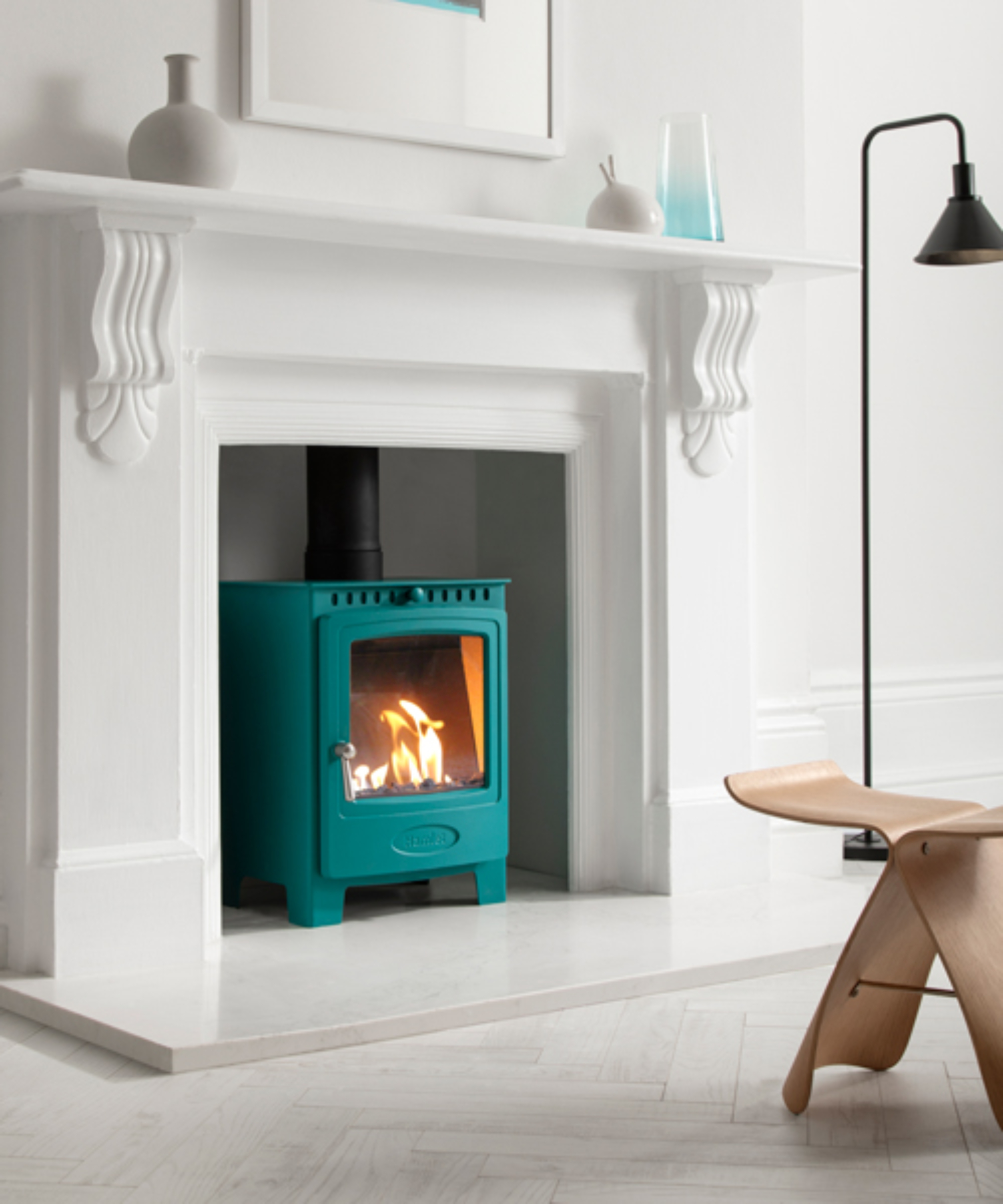
Heat output of bioethanol fires
While the benefits of bioethanol fireplaces are the lack of emissions and their easy installation, it is fair to say that the biggest downside is the small amount of heat they produce. While they give the appearance of producing roaring flames and heat, the amount they do produce is small compared to their log burning counterparts.
“The exact amount of heat you’ll get from a bioethanol stove will vary from model to model," says Joanna Humphreys. "The vast majority of bioethanol stoves stocked at Direct Stoves for example, have a heat output of around 1kW.
"To put this into context, a room with a 5m by 5m floor area in a new build house will need around 1.4kW in order to feel warm on a typical winter’s day. This means that bioethanol stoves are a great supplementary heat source and ideal for taking the chill out of a room.
"However, they shouldn’t be relied upon as the primary source of heat for your home," says Joanna Humphreys. "We like to think of bioethanol stoves as being a great way of keeping a room warm during the day, in between the central heating turning off in the morning and it turning back on again in the evening.”
Other companies such as Arada Stoves do have bioethanol stoves which produce more heat, up to around 2.5kW which can be more than an electric fire and a similar amount to a gas fire. Always check the heat output before you purchase a bioethanol fire or stove to make sure it will be sufficient for your needs.
In comparison, a wood burning stove is likely to have a maximum heat output over 5kW, which will vary with the amount of wood in the stove and the quality of that fuel.
The reality is that a wood burning stove may be well more suited to an existing or older home if you are looking for a stronger supplementary heat source, but a bioethanol stove could be a good option in a modern self build homes, providing the charm of a fireplace without compromising the home's airtightness with a chimney.
Or, perhaps like myself, you live in an apartment in which case they could be a great addition if you're simply looking for a touch of extra heat and the illusion of a more cosy living space.
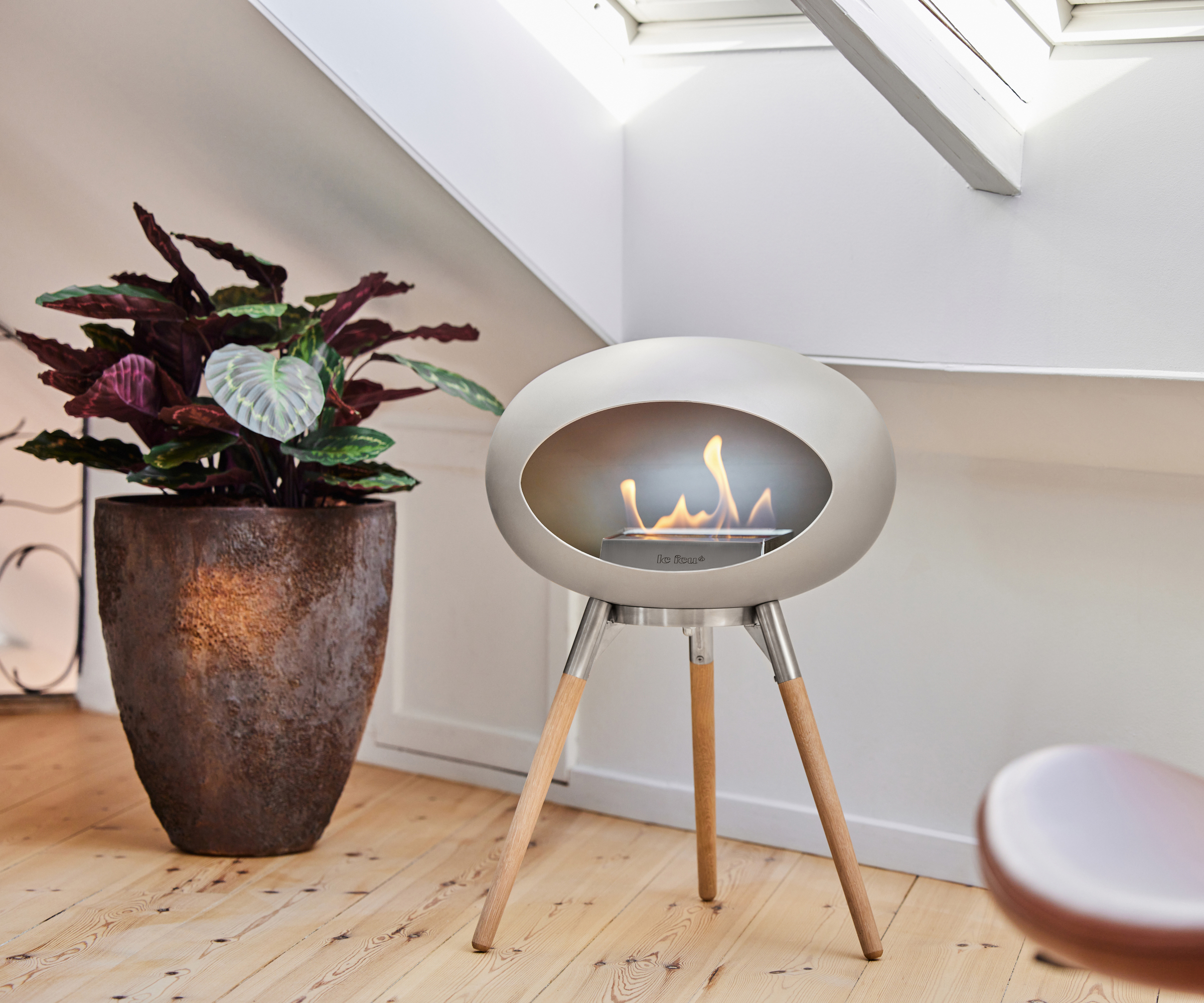
Bioethanol fireplace costs
In terms of the bioethanol fire or stove, the cost will vary depending on the style and size you choose. Small table top versions can cost as little as £180, while costs for larger models can easily reach upwards of £900.
In terms of fuel, you don't need a permanent supply which means you can purchase it as required. Experts at Arada Stoves suggest the burn time from a standard 1 litre bottle of fuel is around 4 to 5 hours. By reducing the size of the opening of the stove’s closure plate, the burn rate can also be slowed down for longer burn times.
Bioethanol fuel costs upwards of £7 per litre. The additional cost benefits are that the nature of all these machines means that there are no maintenance issues and installing them does not need the services of a professional – other than in the case of ceiling mounted versions where you may need a general handyman to ensure it is installed safely.
Buy bioethanol fuel online in bulk
FAQs
Are bioethanol fireplaces safe?
Bioethanol is an inflammable liquid and therefore needs to be treated with caution. But no more than needs be exercised with a gas fire or filling the car with petrol. There are really only common sense rules around the fuel:
- Don’t store the fuel near the fire and away from children
- Don’t store large quantities of fuel
- Don’t try to refill the firebox when the fire is lit or still hot (many devices prevent this happening)
- Don’t overfill the firebox
Arada Stoves also offer the following guidelines. Only use in rooms above 25m2, be sure not to place them too close to walls or small alcoves, still ensure you have a carbon monoxide alarm fitted and try to avoid placing them near strong draughts as this will impact the fuel efficiency.
If a bioethanol fireplace simply won't provide you with enough heat but you like the idea of a more modern solution, check out these corner log burner ideas instead, many of which offer a contemporary solution to your heating needs.

Sarah is Homebuilding & Renovating’s Assistant Editor and joined the team in 2024. An established homes and interiors writer, Sarah has renovated and extended a number of properties, including a listing building and renovation project that featured on Grand Designs. Although she said she would never buy a listed property again, she has recently purchased a Grade II listed apartment. As it had already been professionally renovated, she has instead set her sights on tackling some changes to improve the building’s energy efficiency, as well as adding some personal touches to the interior.
